
Geraldine is a town in the Canterbury region in the South Island of New Zealand. It is about 140 km south of Christchurch, and inland from Timaru, which is 38 km to the south. Geraldine is located on State Highway 79 between the Orari and Hae Hae Te Moana Rivers and 45 kilometres to the east of Fairlie.
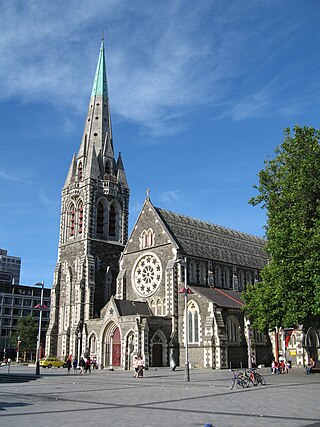
ChristChurch Cathedral, also called Christ Church Cathedral and (rarely) Cathedral Church of Christ, is a deconsecrated Anglican cathedral in the central city of Christchurch, New Zealand. It was built between 1864 and 1904 in the centre of the city, surrounded by Cathedral Square. It became the cathedral seat of the Bishop of Christchurch, who is in the New Zealand tikanga of the Anglican Church in Aotearoa, New Zealand and Polynesia.
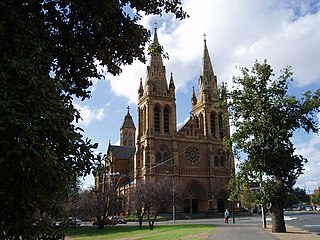
St Peter's Cathedral is an Anglican cathedral in the South Australian capital of Adelaide. It is the seat of the Archbishop of Adelaide and Metropolitan of the Province of South Australia. The cathedral, a significant Adelaide landmark, is situated on approximately 1 acre (0.40 ha) of land at the corner of Pennington Terrace and King William Road in the suburb of North Adelaide.

Holy Trinity Cathedral is an Anglican cathedral situated in Parnell, a residential suburb of Auckland, New Zealand. It is the 'mother church' of the Anglican Diocese of Auckland and the seat of the Bishop of Auckland. The current main church building was consecrated in 1973.

The Diocese of Christchurch is one of the thirteen dioceses and hui amorangi of the Anglican Church in Aotearoa, New Zealand and Polynesia. The Diocese covers the area between the Conway River and the Waitaki River in the South Island of New Zealand.

Alfred Walter Averill was the second Anglican Archbishop of New Zealand, from 1925 to 1940. He was also the fifth Anglican Bishop of Auckland whose episcopate spanned a 25-year period during the first half of the 20th century.
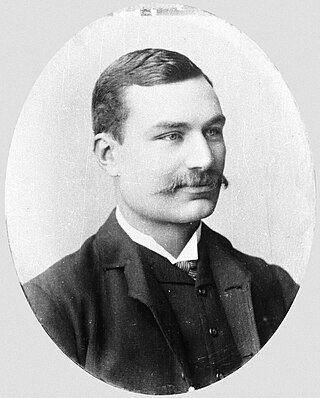
Arthur Edgar Gravenor Rhodes was a New Zealand member of parliament and mayor of Christchurch.
Geraldine was a former parliamentary electorate in the South Canterbury region of New Zealand that existed three times from 1875 to 1911. It was represented by six Members of Parliament.
Gladstone was a parliamentary electorate in the Canterbury region of New Zealand, from 1866 to 1890.
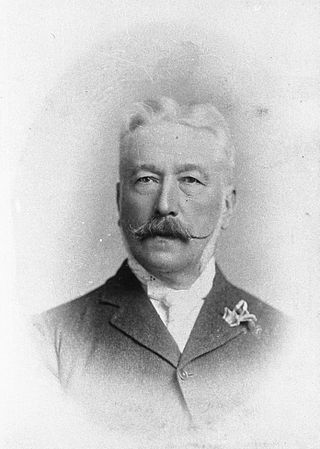
Edward Cephas John Stevens was a New Zealand politician in provincial government in Canterbury, and a member of both the lower and upper houses of parliament. A businessman, he controlled the Christchurch Press for many decades. He was instrumental in introducing cricket to Canterbury and one of his dealings as a land and estate agent resulted in the creation of Lancaster Park.

Edward Richardson was a New Zealand civil and mechanical engineer, and Member of Parliament. Born in England, he emigrated to Australia and continued there as a railway engineer. Having become a partner in a contracting firm, a large project caused him to move to Christchurch in New Zealand, in which country he lived for the rest of his life.
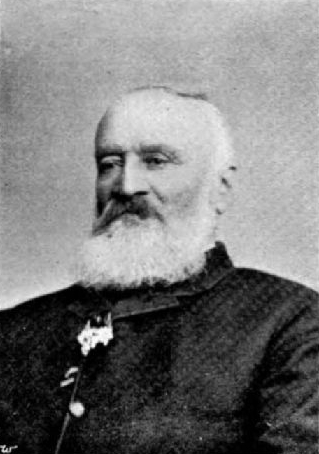
Alfred Cox was a 19th-century runholder and Member of the New Zealand House of Representatives. Born in New South Wales into an upper middle class military family, he was sent home to England to learn about farming. Upon returning to New South Wales, he heard about the large profits that were possible in South Canterbury and bought licences for land that he had not seen. He stocked the land, put a manager in charge and made another trip to England with his wife and their, at that time, small family. He moved to New Zealand permanently in 1857 and lived on his large farm, Raukapuka, which stretched from the sea to the foothills, and of which the homestead was located in present-day Geraldine. He sold his South Canterbury interests and moved to the Waikato, where he bought large land holdings in Hamilton and Thames. He tried to drain his swamp land and lost a lot of money with those ventures. He sold up in 1882 and moved to Christchurch, where he retired.

The Barbadoes Street Cemetery is the oldest cemetery in Christchurch, New Zealand. It was set up with three discrete areas for different denominations.
William Barnett Armson was an architect, surveyor, and engineer in colonial New Zealand. A co-founder of the Canterbury Association of Architects and an architect to the provincial government, he established the architectural firm Armson, Collins and Harman in 1870. It remained active until 1993 and was one of the two oldest architectural firms in New Zealand. Armson’s most important work was the Bank of New Zealand building in Dunedin.
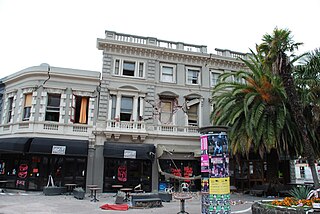
The Excelsior Hotel in 120 Manchester Street, Christchurch, originally the Borough Hotel, in recent years known as Excelsior Backpackers or New Excelsior Backpackers, was a Category I heritage building in central Christchurch. It was designed by then most prominent architect, William Armson, and was one of the few remaining examples of his work in the city. It was heavily damaged in the February 2011 Christchurch earthquake, and all but its western façade was demolished after the earthquakes. The remaining part was demolished in April 2016.

The Church of St Michael and All Angels is an Anglican church located at 84 Oxford Terrace, Christchurch, New Zealand.

John Barton Arundel Acland, often referred to as J. B. A. Acland, was born in Devon, England, as the youngest child of Sir Thomas Dyke Acland, 10th Baronet. He followed his father's path of education and became a barrister in London. With his colleague and friend Charles George Tripp, he formed the plan to emigrate to Canterbury, New Zealand, to take up sheep farming. They were the first to take up land in the Canterbury high country for this purpose. When they divided their land into separate holdings, Acland kept the 100,000 acres (400 km2) that made up the Mount Peel station.
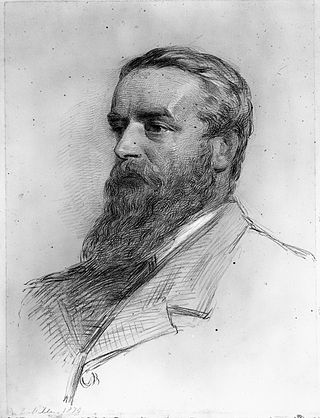
Charles George Tripp was a pioneering sheep farmer in South Canterbury, New Zealand. Together with his friend and business partner John Acland, he was the first to use the Canterbury high country for sheep farming.
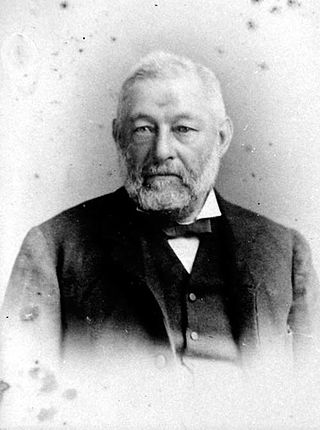
Henry John Le Cren was a New Zealand merchant. Born in London, he was an early settler in Lyttelton and traded both in the port town and central Christchurch. He moved to Timaru in 1858 and is regarded as one of the town's pioneers. Companies owned by him or his eldest son are predecessors to the New Zealand agricultural supply business PGG Wrightson.

Edward Percy Sealy, also referred to as Edwin Sealy, was a New Zealand surveyor, photographer, explorer, farmer, and entomologist. Born into a wealthy English family, Edward and his elder brother Henry received a good education but were orphaned at a young age. The brothers emigrated to New Zealand and Edward was 19 when they arrived in 1859. They initially spent time with a relative in the Hawke's Bay Region from whom Edward learned photography. The brothers became surveyors in the Hawke's Bay and then worked for the Canterbury Provincial Council in this trade. They were involved in a very public scandal in 1876 when Edward beat a prominent member of parliament to some land that they were both interested in based on insider information that had been passed on by his brother. Both Sealy brothers were also farmers, with Henry engaging in much land speculation. They built family mansions next to each other in 1875 just outside of Timaru after they both married. His brother lost his house in the economic downturn that started in the late 1870s.


















